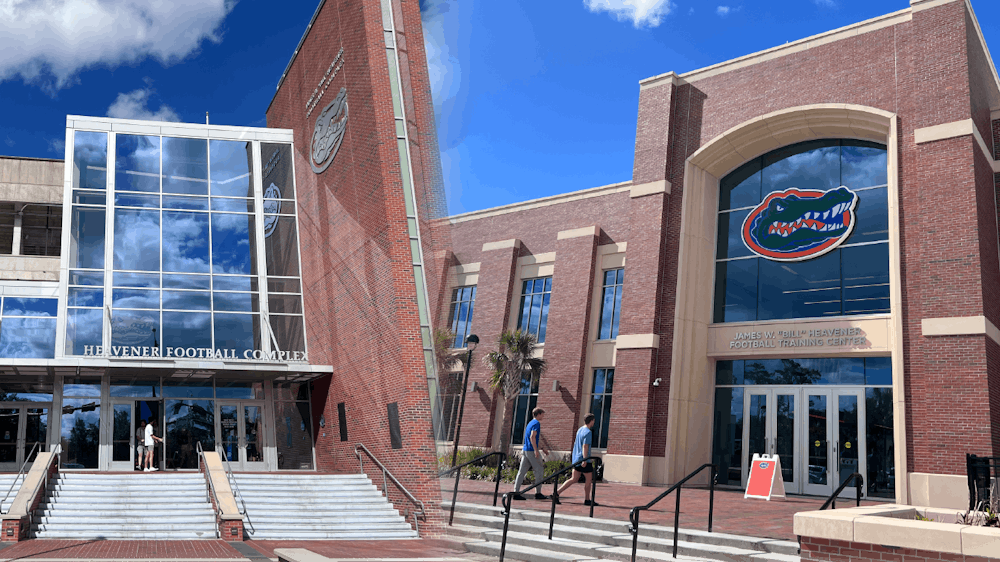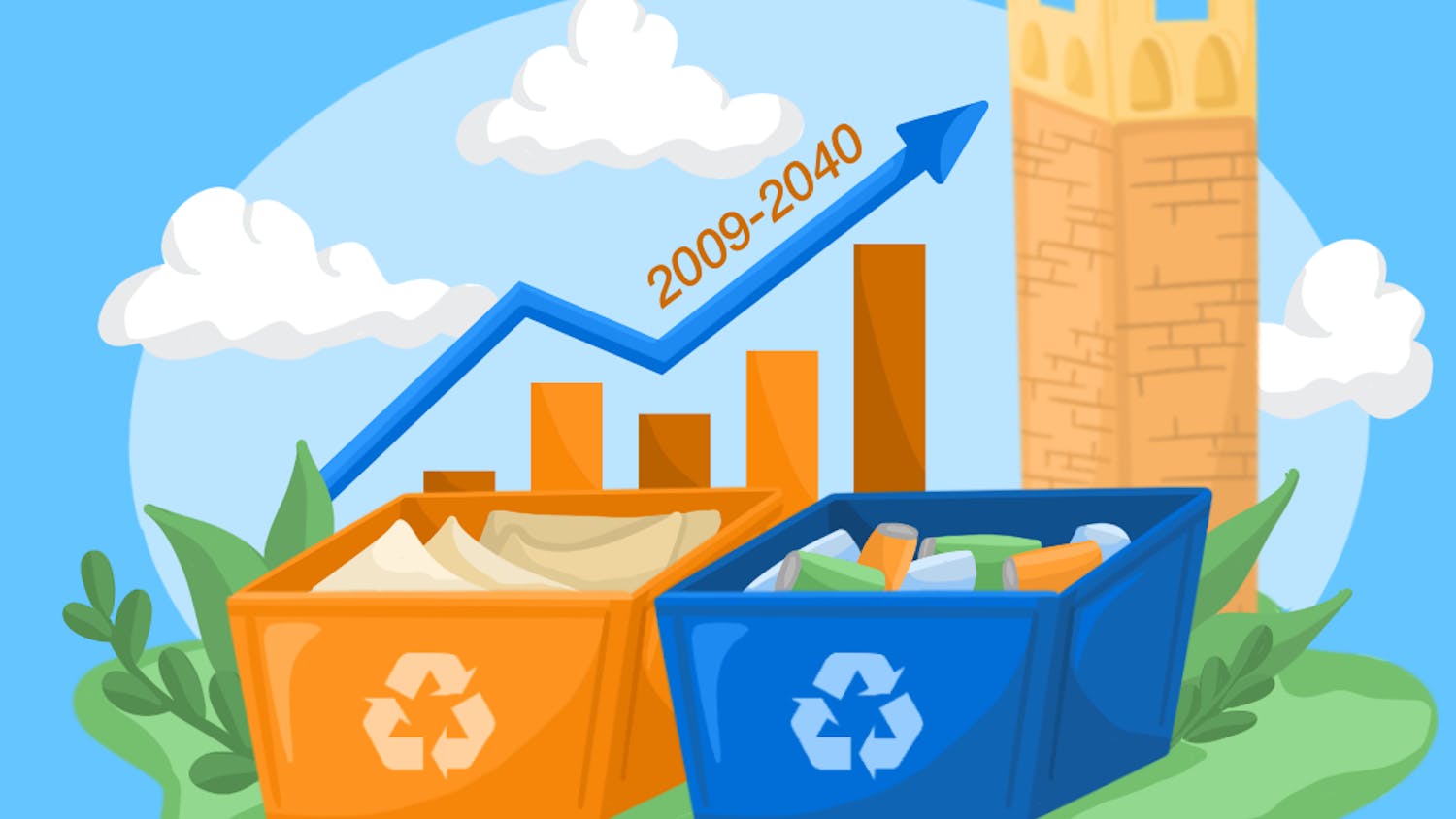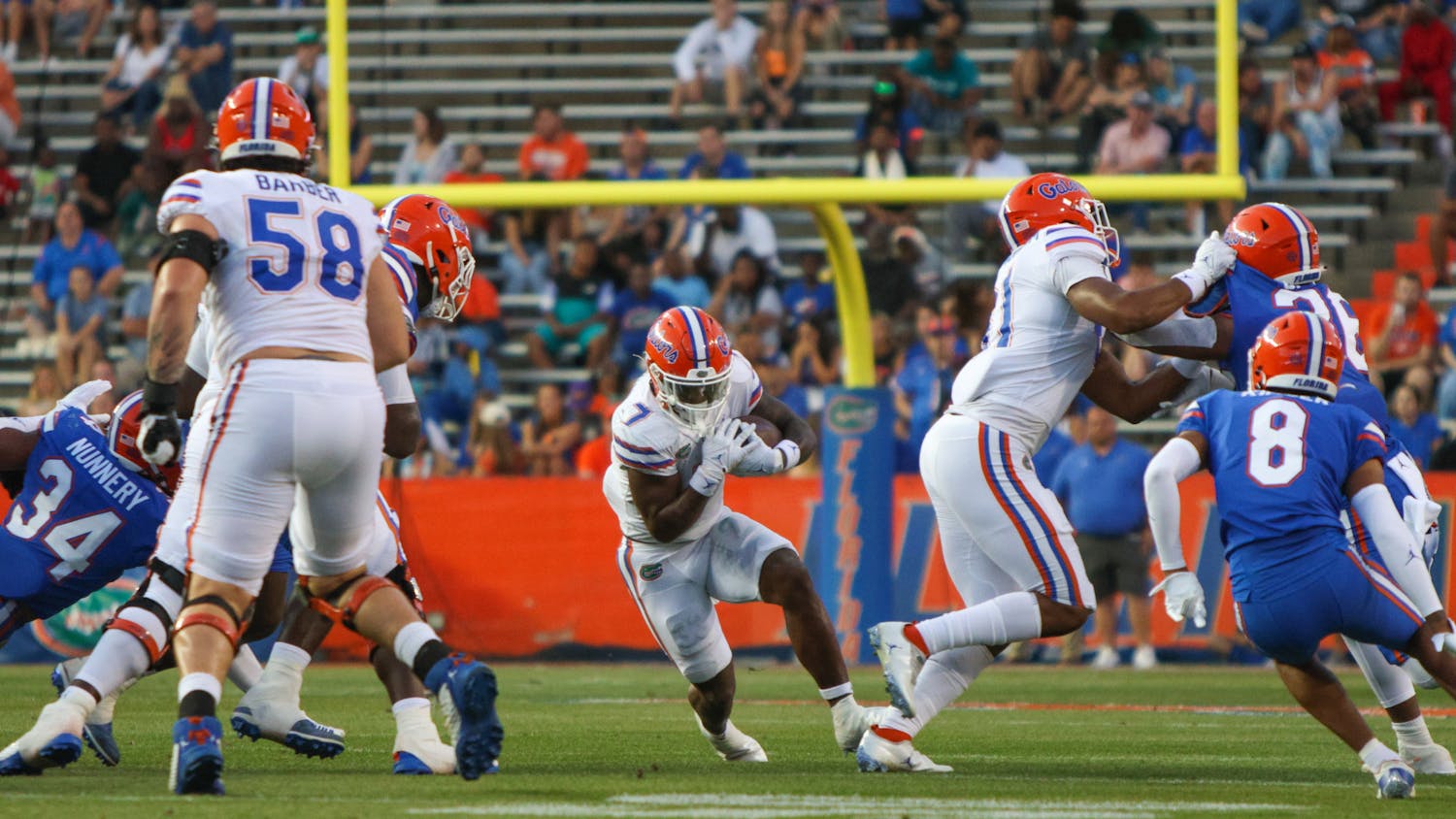UF built a new $85 million, 141,000 square foot student-athlete complex in 2022. The facility came equipped with zero gravity chairs, chill recovery pools, underwater treadmills, weight rooms, film rooms, dining spaces and more. But it differs from the 2009 building it shares a name within one area — sustainability.
UF funneled $21 million into the South West Stadium Expansion of Ben Hill Griffin Stadium in 2009. Florida then announced a three-pronged facilities master plan to add a new hub for Florida football and other UF student-athletes along with other buildings around the campus.
The 2009 rendition of the football complex earned a Leadership in Energy and Environmental Design Platinum certification, the highest level in the LEED ratings — the most widely used green building rating system in the world, according to the U.S. Green Building Council.
The Heavener became the first athletic facility in the U.S. to receive a platinum level certification in 2009. Now, the new complex — the James W. “Bill” Heavener Football Training Center — is only anticipating a LEED Gold certification, assistant athletic director of facilities Bill Smith said.
When UF invests $4 million or more on constructions and renovations, the project is required to reach at least LEED Gold certification or equivalent, according to UF’s sustainability goals.
“There are other sustainability aspects that we conducted in the new facility that are not factored in LEED that promote the health and wellbeing of our athletes, which is also a top priority for us,” he said.
The Heavener is open to all student-athletes across 21 sports and was built to prioritize operational efficiency and the student-athlete experience, Smith said.
Florida views sustainability as more of a way of thinking than a short definition, Director of UF’s Office of Sustainability Matthew Williams said. The school defines the concept as how it makes decisions that will deliver the best outcomes, he said.
“What do we do as a campus right now that allows UF, and the environment and community we live within, to be successful and thriving for a minimum of another 170 years?” Williams said. “Decisions made with that lens are how we make progress toward sustainability.”
The university uses green building ranking systems like LEED and Green Globes, which certified Condron Ballpark, to apply constants to its sustainability efforts.
LEED certifications are determined on a points scale — the more points, the higher the ranking. On the current version of the ranking system, the maximum number of points is 110, and different totals signify certification level.
Buildings become LEED certified at 40 points; silver needs 50 points; gold clocks in at 60; and platinum is awarded for 80 or more points. LEED assesses its checklists and creates new versions as its sustainability goals evolve.
The 2009 Heavener Complex was registered under version 2.2. The complex was evaluated in terms of water efficiency, sustainable sites, energy and atmosphere, material and resources, indoor environmental quality and innovation; it earned 52 of 69 possible points.
The 2022 facility was inspected under LEED version 4 — which looked at location and transportation, integrative process and the existing categories. LEED also adjusts the criteria under each category with new versions.
The Heavener Football Complex was the final stage of UF’s facilities master plan. Smith attributed the plan to the hope of providing a roadmap for the planning and execution of enhancing the facilities for the student-athletes, staff and fans, Smith said.
Florida’s new facilities get permitted under the Florida Building Code. All new construction and major renovations go through a green building certification, Smith said.
“Each facility is different, and we tailor the focus based on building type and needs,” he said.
UF sustainable building coordinator Dustin Stephany said he had a part in the demolition of the Florida Ballpark, the construction of Condron Ballpark in a new location and the planning and building of the Heavener complex. The goal with the new complex was to give UF a space that better supports the needs of the student-athletes, Stephany said.
Instead of replacing the LEED Platinum certified expansion, UF kept the old Heavener Football Complex and added the new training center in a new location, he said.
“At one point, we have to say, ‘OK, yes, we would love to have platinum here,’” he said. “‘It's going to cost this much — how do we retain that value?’”
He pointed to the building as a potential recruiting tool to bring in top athletes. But athletes may not value sustainability as much as he does, he said.
Stephany didn’t believe there was a realistic way to obtain the platinum level, he said.
The complex is anticipating 60 points, and UF has the option to pursue three more points. Even if the facility maximized the amount of points it earned, it likely would have capped at 76 points, Stephany said, which would have been short of the 80 needed for platinum.
“Back then, to be the first LEED certified platinum project in the state, there was a lot of ambition to be a leader in this area,” Stephany said. “I don't feel like we need to continue to push that envelope because we already are the leader.”
The only U.S. university with more green building certifications is Harvard, which is a private university, he said.
UF’s building and design standards have kept the school consistent in its sustainability approach, Stephany said. However, Florida’s athletic facilities, including the Football Training Center, are yet to incorporate one potential game-changer: solar energy.
The cost of solar is decreasing, and the cost of utilities is increasing, he said, so there’s more payback from renewable energy technology. The university has accounted for this by starting a campus-wide movement: solar-ready buildings.
Condron Ballpark, which was completed in August 2020, earned the equivalent to LEED Gold certification. Florida opted to get the stadium certified by the Green Globes ranking system, and its three-globe certification gave it the highest Green Globes certification of any stadium in the U.S.
“This was just our way of kind of expanding outside of LEED,” Stephany said. “We wanted to open up and see if we could develop a more sustainable building without getting some of the headaches that were associated with version four.”
LEED received pushback due to what some in the industry viewed as unrealistic expectations, Stephany said. The green building rating system opted to create version 4.1, which provided the option to substitute credits and meet criteria under version 4.1 while going through registration under version 4, he said.
Version 4 made it more difficult to reach LEED Gold without incurring significant costs, and the UAA wanted to explore other green building certifications. UF opted to get Condron Ballpark assessed by Green Globes instead of LEED.
The latter assesses facilities remotely, but Green Globes sends people to inspect them in person and offers more flexibility when meeting criteria, Stephany said.
Bahar Armaghani is a LEED fellow, an instructional associate professor of sustainability and the built environment and the director of the UF Green Building Learning Collaborative. She worked on most UAA projects as a project manager before her career transition.
She became involved with the United States Green Building Collaborative and LEED certifications and thought it would be a good idea for UF to adopt the practice, she said. The use of LEED certifications raised UF’s expectations above those of normal building codes, Armaghani said.
LEED puts a lot of emphasis on energy efficiency, renewable energy and deconstruction, but it also factors in the occupants and the environment inside the building.
UF sometimes uses rating systems like Green Globes, but LEED is still the preferred rating system, Armaghani said.
“Return on your investment with LEED, it's better,” she said. “It's been kind of proven that LEED is more stringent than Green Globes.”
With LEED, clients can pay for commissioning in order to solve issues and find problems that could otherwise provide trouble down the road. This provides the people who control operation and maintenance of the building the ability to ensure the building operates as intended.
Former athletic director Jeremy Foley and current executive associate athletics director for internal affairs Chip Howard trusted Armaghani during the development of the project’s program, she said.
“We were really close on the edge to get platinum, and then we just kind of pushed, and we said, ‘We need to do better as a design and construction team to get the first platinum certification for that project,’” Armaghani said. “It was a really big deal.”
The UAA and Armaghani were already looking to obtain LEED Gold certification but pushed for platinum when they realized it was within reach.
“It's not only about winning games and other things,” Armaghani said. “They really have a lot more to give to the university, to the students and to the community.”
Contact Kyle Bumpers at kbumpers@alligator.org. Follow him on Twitter @BumpersKyle.
Kyle Bumpers is a fourth-year journalism major and the sports editor of The Alligator. In his free time, he cries about Russell Wilson and writes an outrageous amount of movie reviews on Letterboxd.






